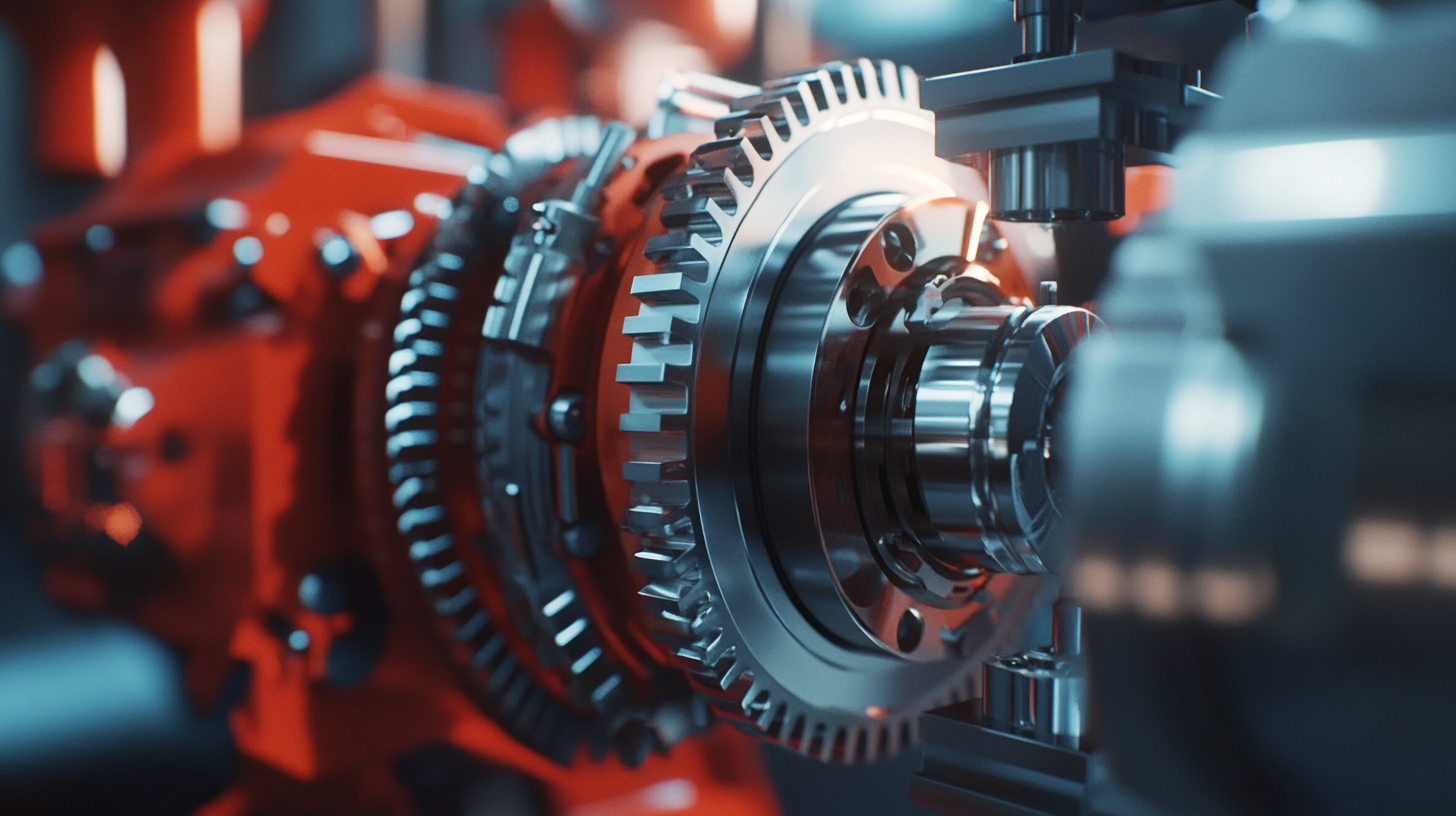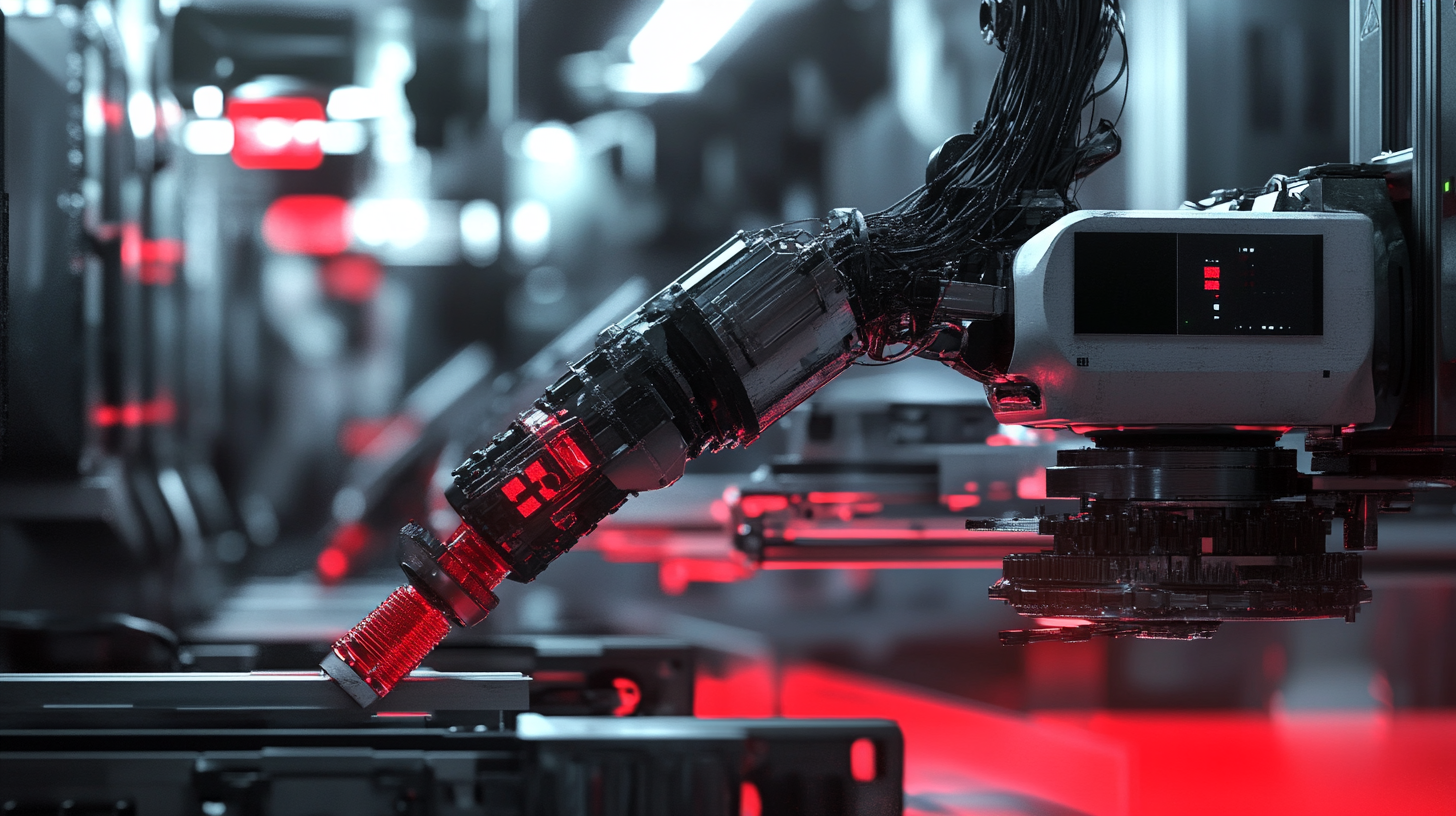In today's fast-paced manufacturing environment, the importance of efficiency and precision cannot be overstated. The global packaging machinery market is projected to grow from USD 45.26 billion in 2021 to USD 62.76 billion by 2028, with capping machines playing a pivotal role in this expansion. According to a recent report, capping systems contribute significantly to the overall productivity of production lines by ensuring secure and consistent sealing of products. This capability not only enhances product integrity but also minimizes the risk of contamination and spoilage. Companies that invest in advanced capping machines can achieve greater throughput and reduce operational costs, making them a key component in modern manufacturing strategies.
Furthermore, the technology behind capping machines has advanced significantly, with innovations such as automatic and semi-automatic systems that cater to various production needs. A study highlights that over 70% of manufacturers are now adopting automated capping solutions to streamline operations and boost efficiency. As businesses strive for operational excellence, integrating sophisticated capping machines into production lines has become essential for maintaining competitive advantages in a rapidly evolving market. Embracing these technologies can unlock new levels of precision and reliability in product packaging, ensuring that companies meet both consumer demands and regulatory standards effectively.

In modern manufacturing, capping machines play a pivotal role in ensuring efficiency and precision on the production line. These machines are designed to securely seal containers, preventing leakage and contamination while also maintaining product integrity. As production volumes increase, the importance of reliable capping solutions becomes paramount. Automated capping machines can handle a variety of bottle shapes and sizes, adapting easily to different product requirements without the need for extensive manual intervention. Moreover, the integration of advanced technologies in capping machines has revolutionized their functionality. Many models now feature precise torque settings, ensuring that caps are not only applied correctly but also consistently, which is vital for maintaining quality standards. The use of sensors and monitoring systems can detect inconsistencies in the capping process, allowing manufacturers to address potential issues in real time. This level of automation and precision contributes to a smoother production flow, reducing downtime and enhancing overall productivity. In addition to improving operational efficiency, capping machines also contribute to sustainability efforts in manufacturing. By achieving tighter seals, these machines help minimize product waste and potential recalls caused by faulty packaging. As businesses continue to focus on optimizing their production lines, investing in high-quality capping technology represents a crucial step towards achieving both efficiency and environmental responsibility. The role of capping machines in modern manufacturing extends far beyond mere sealing; they are an integral component of a streamlined and successful production process.

Capping machines are essential tools in modern production lines, playing a pivotal role in enhancing efficiency and precision during the packaging process. Among their key features, advanced automation stands out, allowing for high-speed operations that meet the demands of a growing market. This efficiency is crucial as manufacturers focus on targeted investments in their digital foundations, aiming to drive innovation and address challenges such as the skills gap within the workforce. With automation, the capping process minimizes human error, ensuring a consistent and reliable seal on products, thus reducing waste and improving product integrity.
Another significant feature of capping machines is their adaptability. Many models can easily be adjusted to accommodate different container sizes and types, making them suitable for various industries, particularly in the food and beverage sector. This flexibility is critical as the North American food and beverage filling and capping machine market is projected to continue its robust growth. Companies that invest in versatile capping solutions can respond more effectively to shifting consumer preferences and trends while maintaining a competitive edge.
Moreover, the integration of smart technologies has revolutionized the functionality of capping machines. Real-time monitoring systems and data analytics enable manufacturers to track performance metrics, identify bottlenecks, and optimize production lines. By harnessing these technologies, capping machines not only improve throughput but also enhance the overall quality of packaged goods, ensuring compliance with stringent standards in safety and hygiene. As the manufacturing landscape evolves, optimizing these key features will be vital for businesses aiming to secure their position in an increasingly competitive environment.

When it comes to ensuring efficiency and precision on your production line, the choice between manual and automated capping solutions is pivotal. Manual capping can be a cost-effective option, particularly for smaller operations or companies just starting to scale their production. This method allows for flexibility and a hands-on approach, enabling workers to oversee the capping process and make adjustments as necessary. However, it often involves higher labor costs over time and can lead to variations in capping consistency, which may affect product quality.
On the other hand, automated capping machines provide a leap forward in terms of speed and reliability. These systems are designed to handle large volumes, providing uniformity in the capping process, which helps maintain high quality standards. The initial investment might be significant, but the long-term returns in efficiency, reduced labor costs, and minimized product wastage can make it a worthwhile endeavor. Furthermore, automation reduces human error and the risk of workplace injuries associated with repetitive manual tasks.
In conclusion, choosing between manual and automated capping solutions depends largely on your production goals, volume, and budget. By carefully analyzing your operational needs, you can unlock the potential of your production line, ensuring that efficiency and precision remain at the forefront of your manufacturing endeavors.

Proper maintenance of capping machines is crucial for ensuring their optimal performance in any production line. One of the primary maintenance tips involves regular inspection of the machine components, including the capping heads, conveyor belts, and sensors. By routinely checking for wear and tear, operators can identify potential issues before they lead to machine downtime. Lubricating moving parts and cleaning debris accumulation can also help to enhance the efficiency and longevity of these machines.
Another important aspect of maintaining capping machines is calibration. Regularly calibrating the equipment to the specific needs of your production line guarantees that the capping process achieves the desired torque and consistency. This not only prevents product spillages but also upholds the integrity of the packaging. Operators should also be trained to understand the specific requirements for different bottle types and caps, making adjustments as necessary to accommodate various products.
Lastly, keeping detailed maintenance logs will aid operators in tracking the performance and upkeep of the capping machines. Documenting maintenance activities can help predict when more significant repairs may be needed or when components should be replaced. By adopting a proactive approach to maintenance, production lines can enhance both the efficiency and precision of their capping processes, ultimately leading to better overall production outcomes.
Integrating capping machines into your existing production systems can significantly enhance the efficiency and accuracy of your manufacturing process. As industries strive for improved outputs while minimizing waste, the modern capping machine serves as a pivotal component in achieving these goals. By automating the capping process, manufacturers can ensure consistent sealing, reducing the risk of product contamination and enhancing shelf life. This not only streamlines operations but also fosters trust with consumers who expect high-quality standards.
When introducing capping machines into current setups, it's crucial to evaluate the compatibility of new technology with existing systems. Choosing an adaptable machine that can work seamlessly within your production line will mitigate the need for extensive modifications. By conducting thorough assessments and performing trial runs, businesses can identify the optimal machine configuration to maximize productivity without causing disruptions. This integration process also allows for the collection of valuable data on capping performance that can be analyzed for further improvements.
Moreover, the choice of capping machine should consider the specific needs of your products, such as cap types and materials. Customization options allow companies to tailor the machinery to their unique requirements, enabling quick adjustments and flexibility in production. This ability to accommodate varying product lines enhances the overall effectiveness of the manufacturing system, allowing for rapid responses to market demands while maintaining high-quality outcomes.
Headquarters
2980 Scott St, Vista, CA 92081
Phone: (760) 734-4177
Fax: (760) 734-4188
Open: 8:00 am – 4:30 pm
Texas
8051 Jetstar Dr #175 Irving, TX 75063
Phone: (972) 915-6888
Fax: (972) 915-6999
Open: 8:00 am – 4:30 pm
Florida
14231 Jetport Loop. #1 Fort Myers, FL 33913
Phone: (239) 225-4020
Fax: (239) 225-4024
Open: 8:00 am – 4:30 pm